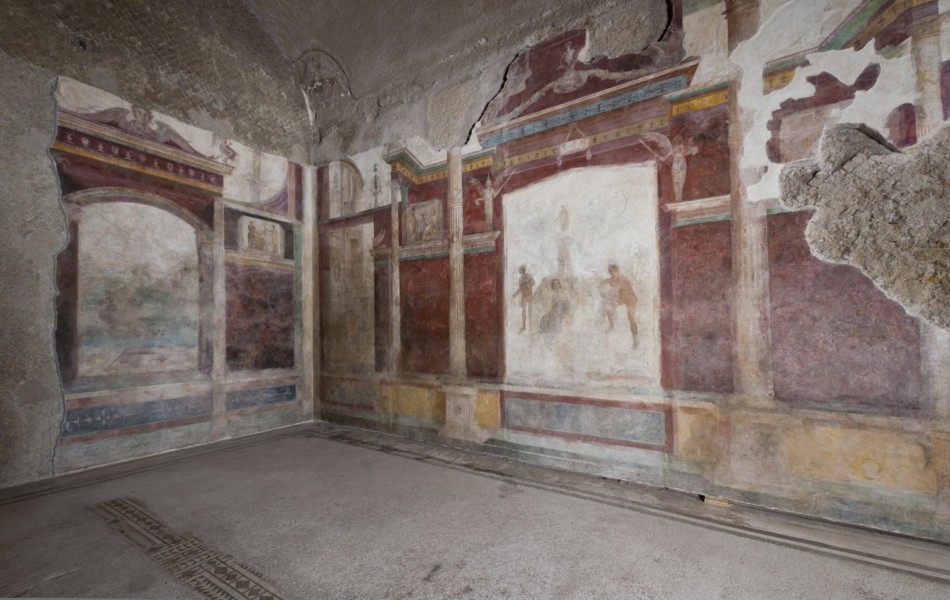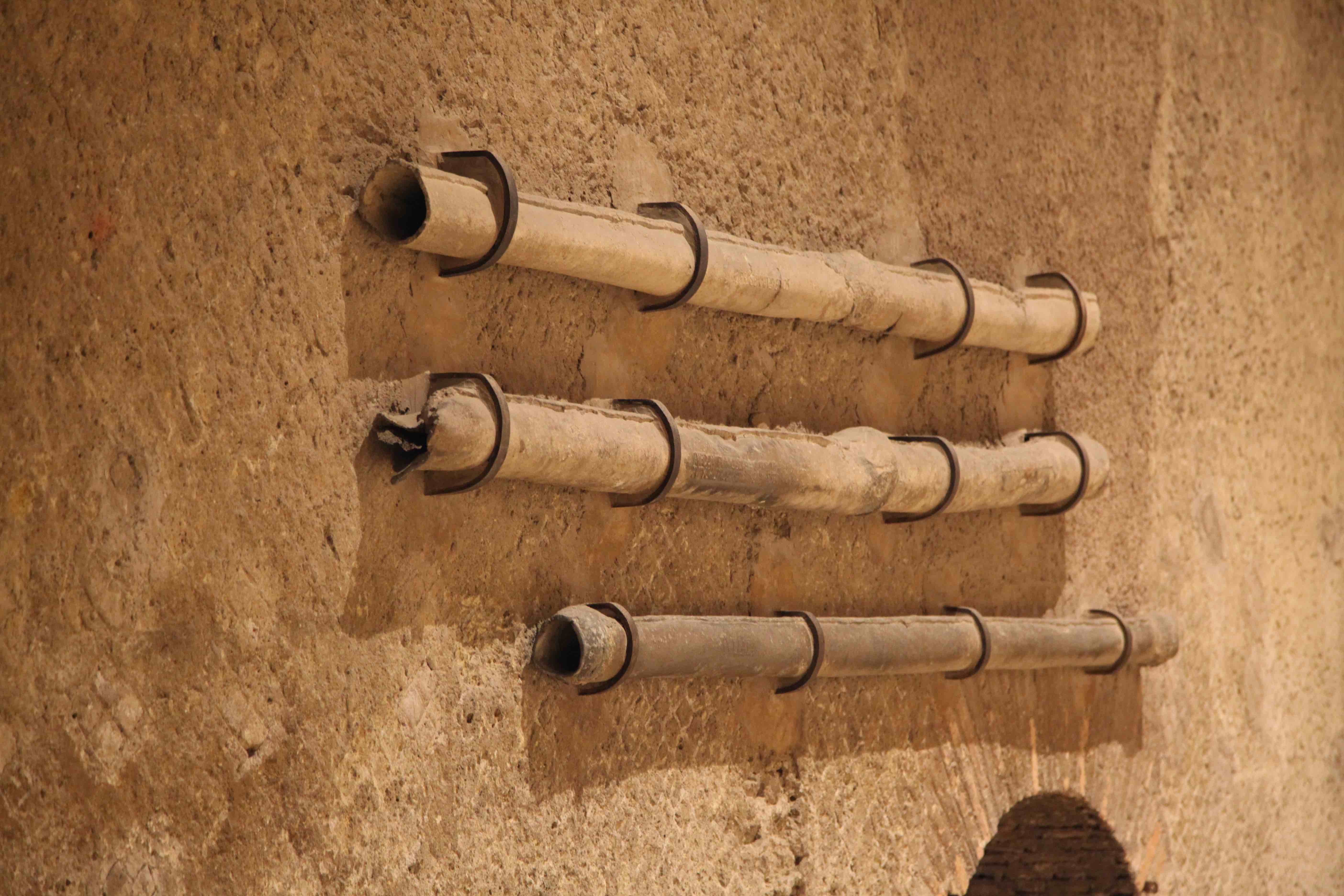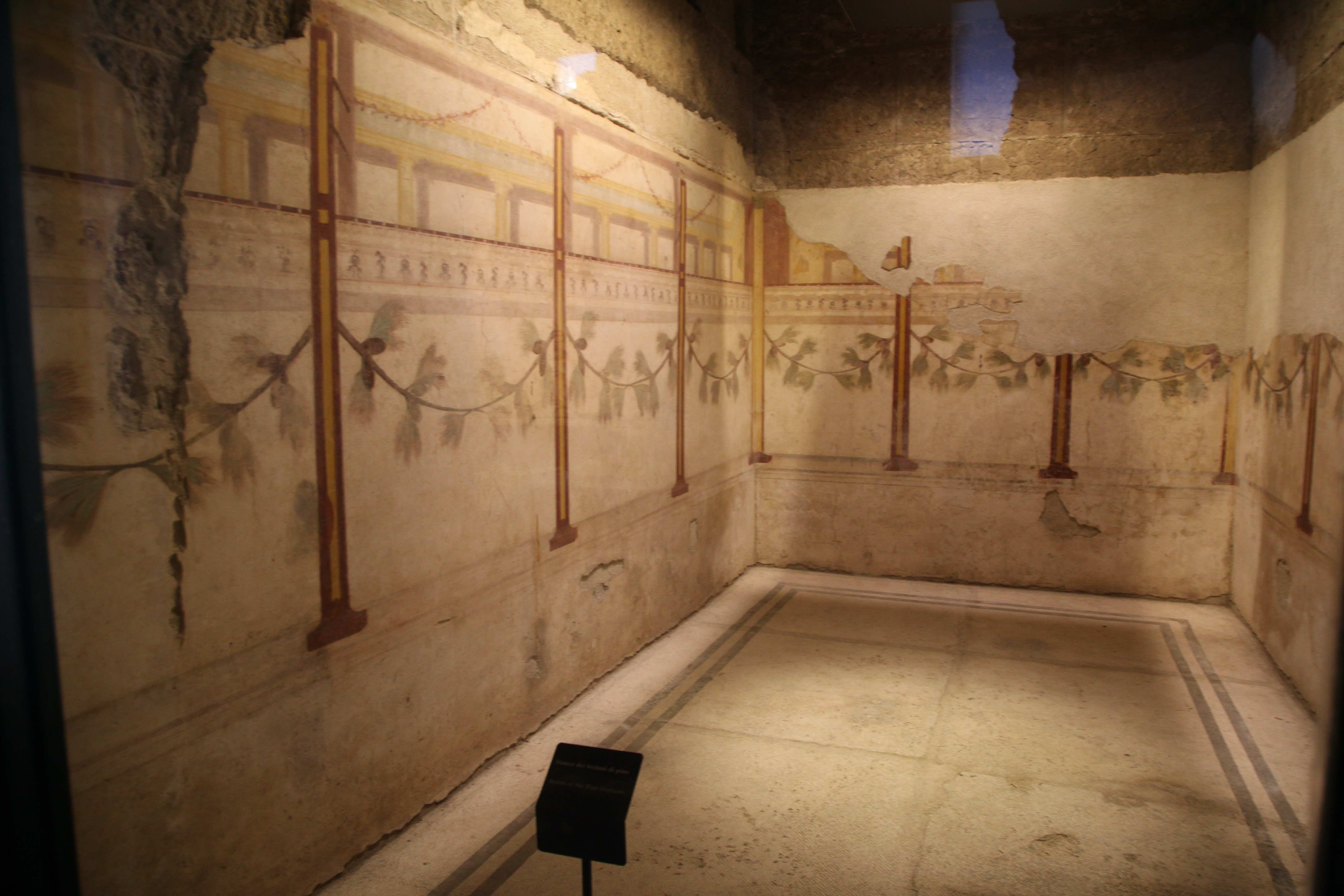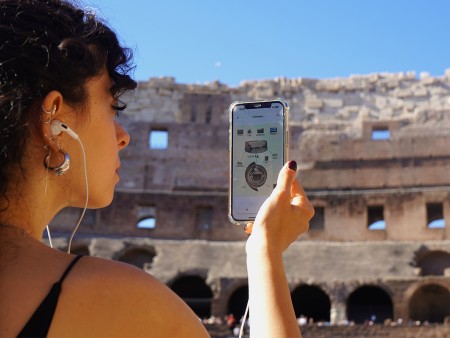Women Taste in Roman Culture: The House of Livia
A glimpse into daily life, ancient Roman architecture, and the beauty of Roman frescoes inside the House of Livia

24 October 2025
Rome Travel GuideTucked into the northern slope of the Palatine Hill, the House of Livia offers a rare glimpse into the private world of the first imperial family of Rome. This elegant residence embodies the refined simplicity and moral dignity that defined the Augustan Age (1st century BC). Here lived Livia Drusilla, the intelligent and influential wife of Emperor Augustus, whose partnership helped shape the political and cultural ideals of the early Empire. Their union, often portrayed as a model of harmony and virtue, found its architectural reflection in this serene and beautifully decorated home. Though modest in scale, the House of Livia exudes an atmosphere of quiet grandeur, enhanced by the magnificent frescoes that still grace its walls, masterpieces that preserve the taste, values, and domestic grace of the imperial household. Thanks to these exceptional works of art, along with key archaeological discoveries that confirmed its identity, the House of Livia remains one of the most evocative and best-preserved testimonies to life at the dawn of the Roman Empire.
Visitors to the Colosseum Archaeological Park can still step inside the House of Livia and experience the remarkable atmosphere of these ancient rooms only with a special Super Sites Pass, from Wednesday to Monday. Read our article about Rome Super Sites to know what are they and how to visit them!
The connection between this elegant residence and Livia herself was established through an exceptional find during 19th century excavations on the Palatine Hill: a lead water pipe stamped with the name Iulia Augusta, the honorific title bestowed upon Livia after Augustus’s death. In ancient Rome, such pipes were often inscribed to indicate the owner of the property or the individual entitled to its water supply. This discovery provided archaeologists with compelling evidence that the house once formed part of Livia’s private quarters within the larger complex of the House of Augustus, the residence of Emperor Augustus. The attribution also aligns perfectly with literary sources describing Livia’s character and lifestyle. Ancient writers such as Tacitus and Suetonius emphasize her austerity, discipline, and domestic virtue, qualities that resonate in the architecture of the house. Unlike later imperial villas overflowing with marble and gilded decoration, this residence embodies an elegant restraint that mirrors the Augustan moral code, a message of moderation and refinement that Augustus and Livia deliberately wished to communicate to their contemporaries.

Architecture and Layout: Simplicity with Grace
Architecturally, the House of Livia follows the traditional plan of an aristocratic Roman domus, centered around a small atrium that served as the heart of the home. The entrance leads into a series of intimate rooms arranged around a peristyle garden, allowing light and air to flow through the building. The modest scale of the house stands in deliberate contrast to the monumental palaces that would later crown the Palatine under emperors such as Domitian. The design, with its quiet courtyards and measured symmetry, reflects the Augustan ideals of order, domestic piety, and moral integrity. Yet, while unassuming in structure, the interior decoration of the House of Livia reveals the sophistication and wealth of its inhabitants. The rooms were painted with some of the finest frescoes of the Second Pompeian Style, a style that flourished in the final decades of the 1st century BCE. These wall paintings demonstrate not only the artistic mastery of Roman painters but also the owner’s participation in a cultural movement that sought to merge traditional domestic art with the grandeur of imperial ideology.
The frescoes within the House of Livia represent a masterpiece of Roman wall painting, uniting illusionistic technique, symbolism, and refined color to create spaces of visual enchantment.
The Private Rooms: Architecture in Illusion
The tablinum, the head of the family's office and reception area for business meetings and to greet clients, and the triclinium, the former dining room, were the main rooms of the House of Livia, and they contain the most fascinating series of frescoes. The walls are painted with a low decorative podium supporting a series of slender columns that divide the space and appear to hold up a painted coffered ceiling. This clever use of perspective gives the illusion of depth, making the rooms seem larger and more open. Between the columns, the artists created imaginary views that extend into the distance. In the center section, there was once a copy of the famous ancient painting “Io, guarded by Argus and Mercury, who comes to free her” — a well-known mythological scene originally painted by the artist Nicias.
The entrance wall once showed the myth of Polyphemus and Galatea, though sadly this fresco has not survived. On both sides of the room, the painted columns frame architectural vistas and fantasy landscapes, enriched with decorative motifs such as sphinxes, winged figures, and delicate candelabra. In the next room, the walls are adorned with garlands and festoons of fruit, again framed by elegant columns and intricate architectural designs. Along the top of the wall runs a painted frieze, executed in a light, sketch-like technique. Its Egyptian-style motifs, softened by the use of highlights and shading, create a dreamy, almost ethereal effect that adds to the sense of refinement and imagination throughout the house.
This immersive imagery reflects the Roman fascination with the relationship between nature and architecture. The fresco dissolves the boundaries between the interior and exterior world, transforming the dining space into a serene open-air garden. For the Roman elite, such imagery was more than aesthetic pleasure — it expressed philosophical ideals. The garden symbolized fertility, peace, and divine favor, aligning with the Augustan ideology of renewal after the chaos of the Republic’s fall. In this sense, the triclinium fresco is both an artistic triumph and a political statement: a visual manifestation of the Pax Augusta, the harmony brought by the emperor and his family.
Symbolism and Ideology: Nature as a Reflection of Women's Taste

The decorative program of the House of Livia is deeply imbued with symbolic meaning. The lush abundance of flora and fauna depicted on its walls is far more than ornamental, it reveals a sophisticated interplay between art, nature, and ideology in the early Roman Empire. The ever-blooming garden symbolizes the perpetual renewal of Rome under Augustus, while the tranquil harmony of the painted architecture evokes order, stability, and divine peace. Through these artistic choices, the imagery reflects the political messages of the Augustan age: that Augustus had restored balance to Rome and that his household, embodied by Livia Drusilla, stood as a paragon of virtue, fertility, and prosperity.
Yet the frescoes also speak to the realm of female taste and sensibility in Roman culture. The selection of a garden theme may well reflect Livia’s own aesthetic preferences and moral ideals. Ancient authors often praised her devotion to domestic virtue and agricultural abundance, qualities that aligned perfectly with the Augustan vision of moral renewal. In this sense, the imagery of thriving vegetation, fruit-laden trees, and gentle birds becomes both a metaphor for fertility and continuity and an expression of refined feminine taste, an appreciation for beauty that mirrors moral order and natural harmony.
The garden, therefore, operates on multiple levels: as an imperial allegory, a personal reflection of Livia’s character, and a testament to the role of elite women as patrons and arbiters of taste in Roman society. Through this decorative program, Livia’s domestic space becomes a microcosm of the Augustan world—a place where aesthetic sensibility, political ideology, and feminine virtue merge seamlessly, celebrating not only the rebirth of Rome but also the cultivated influence of women within its cultural and moral framework.
Our categories:
You may also be interested ...

Vatican Private Tour with Sistine Chapel & St. Peter's Basilica: Renaissance’s Wonders
Private tour
Discover with a skip the line Private Vatican Tour the Sistine Chapel, Vatican Museums and St Peter’s Basilica
starting from: € 275

Colosseum Guided Audio Tour with Roman Forum and Palatine Hill
Private tour
Discover Ancient Rome’s secrets and history with our immersive Colosseum guided audio tour, rich in image and content
starting from: € 51 € 42
